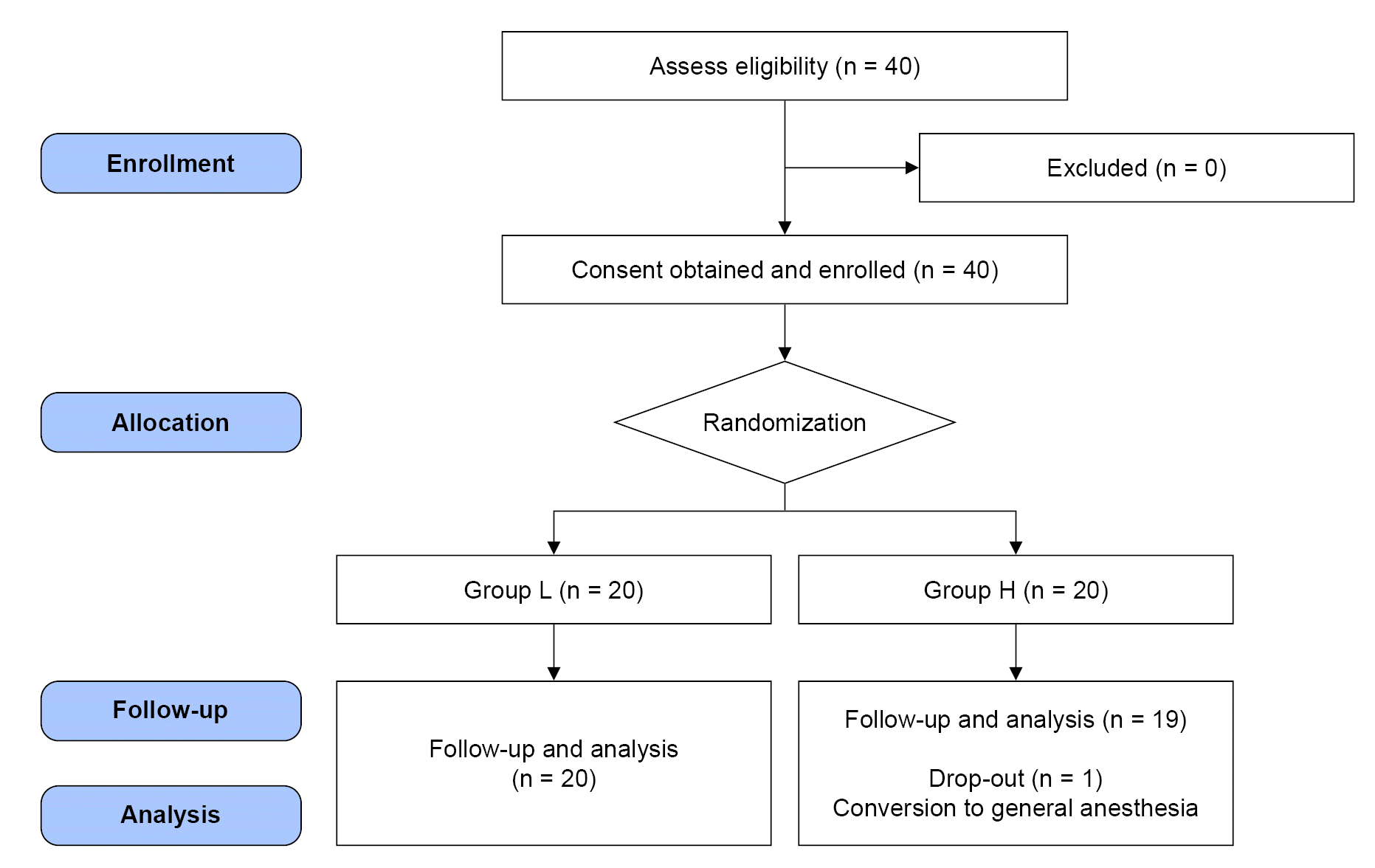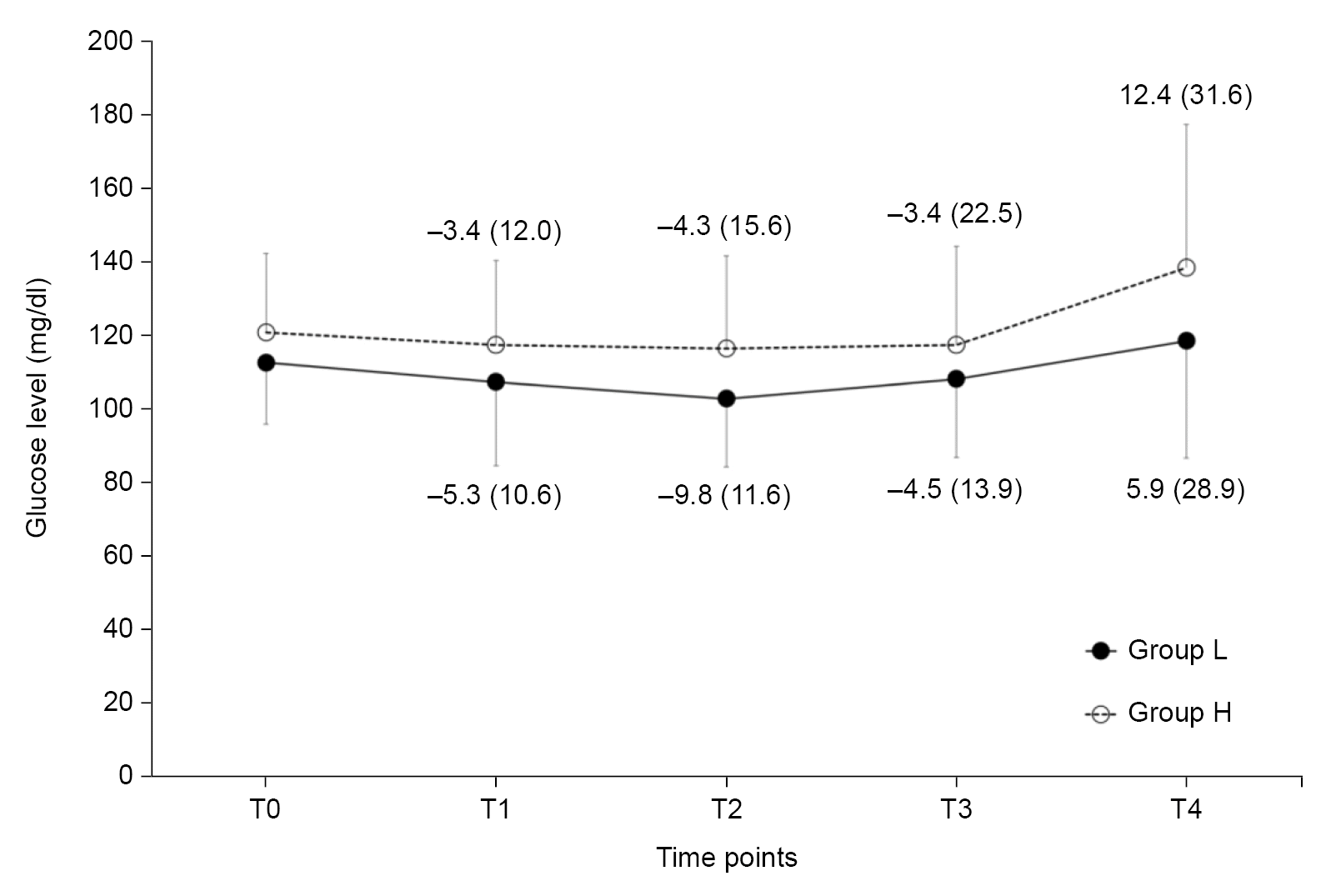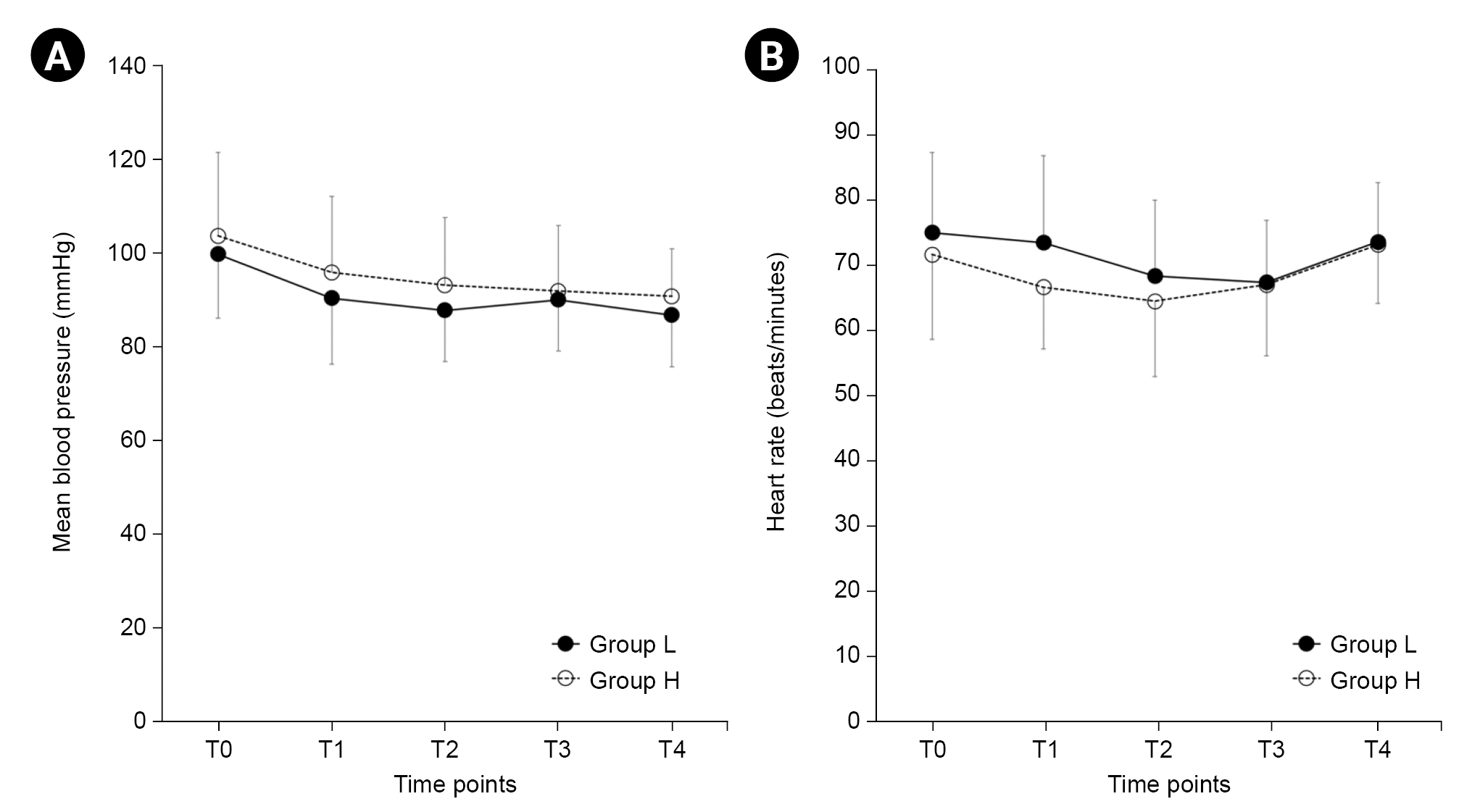1. Duggan EW, Carlson K, Umpierrez GE. Perioperative hyperglycemia management: an update. Anesthesiology. 2017; 126:547–60.
2. Seo KH. Perioperative glucocorticoid management based on current evidence. Anesth Pain Med (Seoul). 2021; 16:8–15.

3. Vriesendorp TM, Morélis QJ, Devries JH, Legemate DA, Hoekstra JB. Early post-operative glucose levels are an independent risk factor for infection after peripheral vascular surgery. A retrospective study. Eur J Vasc Endovasc Surg. 2004; 28:520–5.

4. Cheisson G, Jacqueminet S, Cosson E, Ichai C, Leguerrier AM, Nicolescu-Catargi B, et al. Perioperative management of adult diabetic patients. Intraoperative period. Anaesth Crit Care Pain Med. 2018; 37 Suppl 1:S21–5.
5. Lee SY, Lee KM, Lee JG, Lim JA, Woo NS, Lee YC. Effect of hyperglycemia on the length of postoperative hospital stay. Korean J Anesthesiol. 2005; 48:565–9.

6. Frisch A, Chandra P, Smiley D, Peng L, Rizzo M, Gatcliffe C, et al. Prevalence and clinical outcome of hyperglycemia in the perioperative period in noncardiac surgery. Diabetes Care. 2010; 33:1783–8.

7. Jeon YS. Recent findings on the use of hydroxyethyl starch. Anesth Pain Med. 2014; 9:159–64.
8. Myburgh JA. Fluid resuscitation in acute medicine: what is the current situation? J Intern Med. 2015; 277:58–68.

9. Jungheinrich C, Neff TA. Pharmacokinetics of hydroxyethyl starch. Clin Pharmacokinet. 2005; 44:681–99.

10. Buggy D, Higgins P, Moran C, O'Brien D, O'Donovan F, McCarroll M. Prevention of spinal anesthesia-induced hypotension in the elderly: comparison between preanesthetic administration of crystalloids, colloids, and no prehydration. Anesth Analg. 1997; 84:106–10.
11. Chawnchhim AL, Jacob M, Jaiswal A, Paul D, Kaur KB, Ray A, et al. Effect of hydroxyethyl starch on blood sugar levels in surgeries under subarachnoid block: a cross-sectional study. J Clin Diagnostic Res. 2020; 14:UC11–4.

12. Jung KT, Shim SB, Choi WY, An TH. Effect of hydroxyethyl starch on blood glucose levels. Korean J Anesthesiol. 2016; 69:350–6.

13. Lou S, Bian L, Long C, Wang Z, Ma J, Zhou B. Does 6% hydroxyethyl starch 130/0.4 impact differently on blood glucose than 4% gelatin in patients receiving open heart surgery? Perfusion. 2012; 27:113–8.

14. Murty SS, Kamath SK, Chaudhari LS. Effects of hydroxyethyl starches on blood sugar levels: a randomized double blind study. Indian J Anaesth. 2004; 48:196–200.
15. Patki A, Shelgaonkar V. Effect of 6% hydroxyethyl starch-450 and low molecular weight dextran on blood sugar levels during surgery under subarachnoid block: a prospective randomised study. Indian J Anaesth. 2010; 54:448–52.

16. Chandra AP. Effects of preloading with isotonically balanced tetra hydroxyethyl starch versus preloading with gelufusine on blood glucose level in diabetic patients. Acad Anesthesiol Int. 2020; 5:162–7.
17. Marks JB. Perioperative management of diabetes. Am Fam Physician. 2003; 67:93–100.
18. Sudhakaran S, Surani SR. Guidelines for perioperative management of the diabetic patient. Surg Res Pract. 2015; 2015:284063.

19. American Diabetes Association. 14. Diabetes care in the hospital: standards of medical care in diabetes-2018. Diabetes Care. 2018; 41(Suppl 1):S144–51.
20. Kang H. Sample size determination for repeated measures design using G Power software. Anesth Pain Med. 2015; 10:6–15.

21. Cohen J. A power primer. Psychol Bull. 1992; 112:155–9.

22. Gottschalk A, Rink B, Smektala R, Piontek A, Ellger B, Gottschalk A. Spinal anesthesia protects against perioperative hyperglycemia in patients undergoing hip arthroplasty. J Clin Anesth. 2014; 26:455–60.

23. Baron JF. A new hydroxyethyl starch: HES 130/0.4 Voluven®. Transfus Altern Transfus Med. 2000; 2:13–21.
24. Kirch W, Köhler H, Horstmann HJ. Retarded elimination of a high-molecular enzyme-substrate-complex after hydroxyethyl-starch-infusion. Toxicological aspects of food safety. In : Leonard BJ, editor. Berlin: Springer;1978. p. 335–8.
25. Yadav R, Bhartiya JP, Verma SK, Nandkeoliar MK. The evaluation of serum amylase in the patients of type 2 diabetes mellitus, with a possible correlation with the pancreatic functions. J Clin Diagn Res. 2013; 7:1291–4.

26. Bajwa SJ, Kulshrestha A, Jindal R. Co-loading or pre-loading for prevention of hypotension after spinal anaesthesia! A therapeutic dilemma. Anesth Essays Res. 2013; 7:155–9.

27. Kim CS, Ahn HJ, Shin SH, Choi DH. Prevention of hypotension with crystalloid versus colloid during spinal or combined spinal-epidural anesthesia for cesarean delivery. Korean J Anesthesiol. 2004; 46:408–13.

28. Mannion JD, Rather A, Manifold S, Gardner K, McEvilly M, Yaeger J, et al. Postoperative hyperglycemia in patients with and without diabetes after major joint replacement: the impact of an enhanced glucose management program. JB JS Open Access. 2021; 6:e20.00172.

29. Thomas DJ, Alberti KG. Hyperglycaemic effects of Hartmann's solution during surgery in patients with maturity onset diabetes. Br J Anaesth. 1978; 50:185–8.

30. Simpson AK, Levy N, Hall GM. Peri-operative i.v. fluids in diabetic patients--don't forget the salt. Anaesthesia. 2008; 63:1043–5.







 PDF
PDF Citation
Citation Print
Print



 XML Download
XML Download